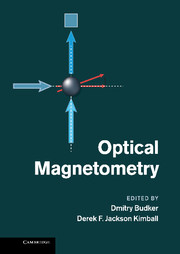20 - Commercial magnetometers and their application
from Part III - Broader impact
Published online by Cambridge University Press: 05 May 2013
Summary
Introduction
Applications such as geophysical exploration for minerals and oil, anti-submarine warfare, volcanology, earthquake studies, magnetic observatories, and the detection of buried objects at sites of archaeological significance require instruments that can measure small variations of the Earth's magnetic field in time and space. Other applications such as laboratory metrology, space exploration, and biomedicine may require measurements at lower or higher fields. The demand for precise measurements of magnetic fields is met in part by commercial atomic magnetometers supplied by a number of manufacturers over the last fifty years. Commercial optical magnetometers based on cesium, potassium, and helium are now firmly established. Commercial magnetometers designed for measuring anomalies in the Earth's field are typically operated as self-oscillating devices or VCO (voltage-controlled oscillator) lock-in devices with the oscillation or lock-in frequency proportional to the magnetic field. This chapter examines the specifications for atomic magnetometers, compares the most widely used approaches, describes some of the features demanded by different applications, and surveys the history of atomic magnetometers. (The online supplemental material contains a table listing many of the United States patents related to the field of atomic magnetometry.)
Earth's field at the surface ranges from 20 to 80 μT. Typically the user is seeking to generate a map of the local magnetic field upon which magnetic anomalies can be discerned. The map may be made by means of a walking survey, for instance in the case of archaeological sites. For mineral exploration much wider areas must be surveyed, so that typically airborne and ground surveys are required. The magnetic anomalies can be in the pT range or even smaller. For such applications, the most significant requirement for the magnetometer is its sensitivity.
- Type
- Chapter
- Information
- Optical Magnetometry , pp. 387 - 405Publisher: Cambridge University PressPrint publication year: 2013
- 13
- Cited by

